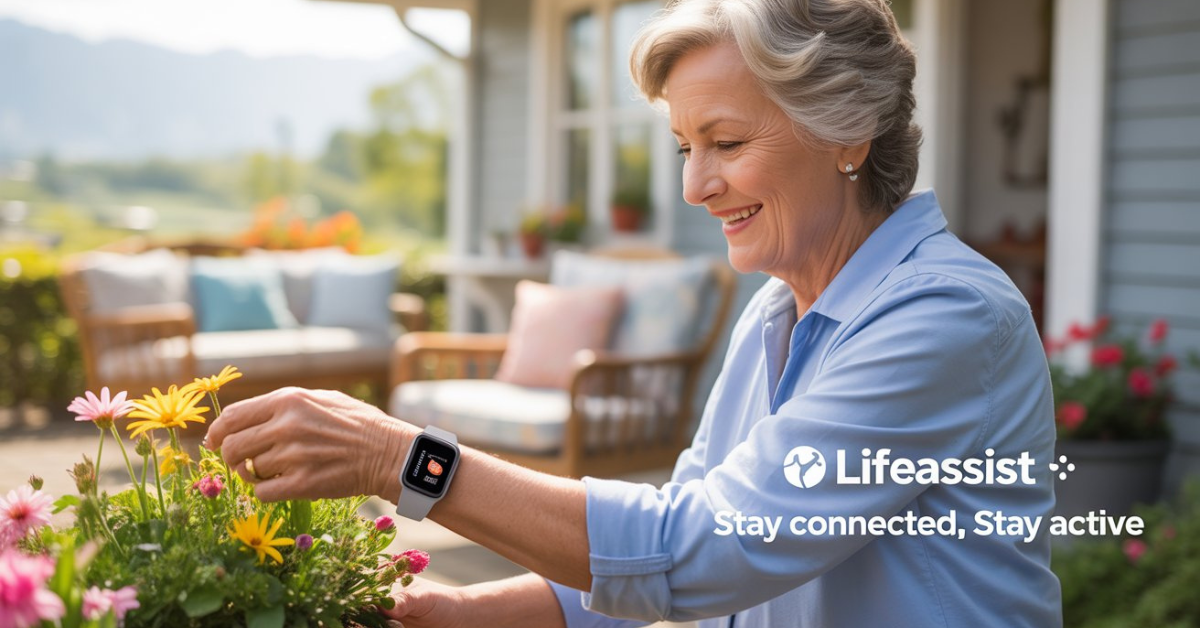In today’s fast-paced digital world, wearable technology for seniors has become one of the most innovative solutions to address the growing needs of older adults. From promoting independence to ensuring safety, these intelligent devices are transforming the way seniors manage their health, connect with loved ones, and navigate their daily lives. As the aging population continues to grow, wearable technology is no longer a luxury but an essential tool for improving overall well-being and longevity.
The Importance of Wearable Technology for Seniors
The senior population faces unique challenges, including declining mobility, chronic health conditions, and higher risks of falls or medical emergencies. Wearable devices provide real-time data, continuous monitoring, and quick access to help when needed most. These tools not only empower seniors to maintain independence but also give family members and caregivers peace of mind.
Some of the most important benefits include:
- Health Monitoring: Continuous tracking of vital signs such as heart rate, oxygen levels, blood pressure, and sleep patterns.
- Emergency Response: Immediate alerts in case of falls, accidents, or medical emergencies.
- Improved Communication: Seamless connectivity with caregivers, doctors, and family members.
- Increased Independence: Supporting seniors in staying active, confident, and secure in their own homes.
Top Wearable Devices Designed Specifically for Seniors
1. Smartwatches for Seniors
Modern smartwatches go far beyond telling time. For seniors, they serve as personal health assistants. Features include:
- Heart rate and ECG monitoring to detect irregularities early.
- Fall detection sensors that automatically notify emergency contacts.
- GPS tracking to prevent wandering in seniors with dementia or Alzheimer’s.
- Medication reminders that ensure doses are never missed.
Well-known models such as Apple Watch SE, Fitbit Sense, and Samsung Galaxy Watch are increasingly popular among seniors because of their intuitive design and advanced safety tools.
2. Wearable Emergency Response Systems
Personal Emergency Response Systems (PERS) have evolved into compact, stylish wearables. Seniors can press a button or rely on automatic fall detection to connect directly with emergency services.
Some leading devices offer:
- 24/7 monitoring centers that connect users with live operators.
- Two-way communication built into pendants or wristbands.
- Long battery life for reliable performance.
- Waterproof designs, allowing seniors to wear them even in the shower where accidents often happen.
Brands like Medical Guardian, Lifeline, and Bay Alarm Medical specialize in these dedicated senior safety devices.
3. Fitness and Activity Trackers
Staying active is crucial for healthy aging, and fitness trackers help seniors maintain mobility. These wearables encourage seniors to:
- Track daily steps, calories burned, and activity levels.
- Monitor sleep quality to ensure proper rest.
- Set personal goals that encourage daily movement.
- Detect irregular heart rates and alert the user.
Lightweight and easy-to-use trackers from Fitbit, Garmin, and Amazfit allow seniors to focus on health without the complexity of advanced technology.
4. Wearables for Dementia and Alzheimer’s Patients
Cognitive decline poses significant safety concerns, and wearable devices can mitigate risks by:
- GPS-enabled trackers that prevent wandering.
- Geofencing alerts that notify caregivers if a senior leaves a designated area.
- Simplified emergency call buttons for quick help.
Companies such as AngelSense and GPS SmartSole offer specialized solutions tailored for seniors with memory-related conditions.
Health Monitoring Features That Improve Senior Care
Heart Health Monitoring
Heart conditions are one of the leading health concerns for seniors. Wearable technology provides continuous ECG monitoring, arrhythmia detection, and alerts for abnormal heart rates. This information can be shared directly with physicians, reducing hospital visits and improving preventive care.
Sleep Tracking
Quality sleep plays a vital role in healthy aging. Many seniors struggle with insomnia or sleep apnea. Wearable devices analyze sleep stages, oxygen saturation, and restlessness during the night, offering insights that help optimize sleep habits.
Blood Pressure and Oxygen Monitoring
Modern wearables come equipped with non-invasive sensors that measure blood pressure and blood oxygen levels (SpO2). This data is crucial for seniors with conditions like hypertension, COPD, or respiratory disorders.
Fall Detection and Prevention
Falls are among the biggest health risks for seniors. Advanced wearables use accelerometers, gyroscopes, and AI algorithms to detect sudden drops. In case of a fall, the device automatically sends an alert to caregivers or emergency services, ensuring immediate assistance.
The Role of AI and IoT in Senior Wearables
The future of wearable technology for seniors lies in artificial intelligence (AI) and the Internet of Things (IoT). These technologies enable devices to:
- Analyze health patterns and predict risks before they occur.
- Integrate with smart home systems to enhance safety.
- Provide telemedicine support by syncing data directly with healthcare providers.
- Offer personalized insights tailored to individual health conditions.
With AI-driven insights, seniors benefit from proactive healthcare rather than reactive treatments.
How Wearable Technology Promotes Independence
For seniors, independence is more than just convenience—it is dignity. Wearable devices support this by:
- Allowing seniors to live alone with emergency backup support.
- Encouraging regular physical activity through reminders and motivational tracking.
- Helping seniors stay socially connected through messaging and calls directly from their devices.
- Providing confidence in mobility, reducing fear of falls or medical issues.
This combination of safety, health monitoring, and connectivity empowers seniors to remain independent longer.
Choosing the Right Wearable for Seniors
When selecting a wearable device for seniors, several factors should be considered:
- Ease of Use: Simple interfaces, large fonts, and intuitive navigation.
- Battery Life: Devices with long-lasting batteries reduce the need for frequent charging.
- Comfort and Design: Lightweight, discreet, and comfortable for all-day wear.
- Emergency Features: Built-in SOS buttons, automatic fall detection, and reliable connectivity.
- Data Sharing: Ability to sync with caregiver apps or healthcare platforms.
The ideal device should strike a balance between advanced functionality and user-friendly design.
The Future of Wearable Technology for Seniors
The next generation of senior-focused wearables will be smarter, smaller, and more intuitive. Innovations in biometric sensors, AI-powered predictive analytics, and seamless telehealth integration will allow seniors to live healthier, safer, and more fulfilling lives. These advancements will not only benefit seniors but also revolutionize the healthcare industry by shifting towards preventive and personalized care.
Conclusion
Wearable technology for seniors is reshaping the aging experience by offering a perfect blend of independence, safety, and health management. With features such as real-time monitoring, fall detection, GPS tracking, and AI-powered insights, these devices are invaluable tools for both seniors and caregivers. As technology continues to evolve, the integration of smart wearables into senior lifestyles will play an even greater role in promoting healthy aging, security, and peace of mind.



